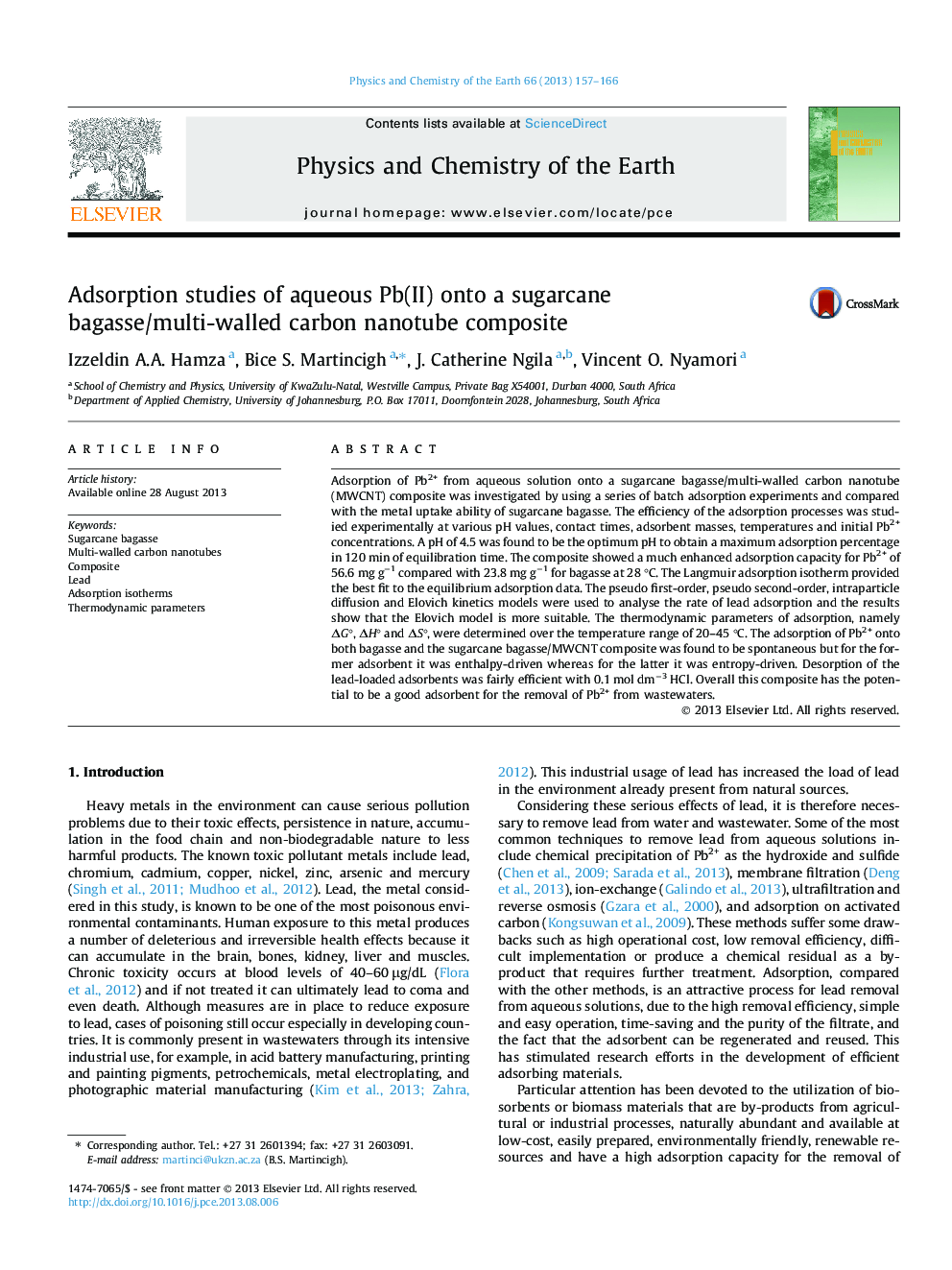| کد مقاله | کد نشریه | سال انتشار | مقاله انگلیسی | نسخه تمام متن |
|---|---|---|---|---|
| 4721037 | 1639357 | 2013 | 10 صفحه PDF | دانلود رایگان |

• A novel composite from sugarcane bagasse and multi-walled carbon nanotubes was synthesized.
• It was applied for the removal of Pb(II) from water.
• The adsorption capacity of the composite was improved from that of bagasse.
• This composite shows good potential for the removal of heavy metals from wastewaters.
Adsorption of Pb2+ from aqueous solution onto a sugarcane bagasse/multi-walled carbon nanotube (MWCNT) composite was investigated by using a series of batch adsorption experiments and compared with the metal uptake ability of sugarcane bagasse. The efficiency of the adsorption processes was studied experimentally at various pH values, contact times, adsorbent masses, temperatures and initial Pb2+ concentrations. A pH of 4.5 was found to be the optimum pH to obtain a maximum adsorption percentage in 120 min of equilibration time. The composite showed a much enhanced adsorption capacity for Pb2+ of 56.6 mg g−1 compared with 23.8 mg g−1 for bagasse at 28 °C. The Langmuir adsorption isotherm provided the best fit to the equilibrium adsorption data. The pseudo first-order, pseudo second-order, intraparticle diffusion and Elovich kinetics models were used to analyse the rate of lead adsorption and the results show that the Elovich model is more suitable. The thermodynamic parameters of adsorption, namely ΔG°, ΔH° and ΔS°, were determined over the temperature range of 20–45 °C. The adsorption of Pb2+ onto both bagasse and the sugarcane bagasse/MWCNT composite was found to be spontaneous but for the former adsorbent it was enthalpy-driven whereas for the latter it was entropy-driven. Desorption of the lead-loaded adsorbents was fairly efficient with 0.1 mol dm−3 HCl. Overall this composite has the potential to be a good adsorbent for the removal of Pb2+ from wastewaters.
Journal: Physics and Chemistry of the Earth, Parts A/B/C - Volume 66, 2013, Pages 157–166